The size of hollow core slabs: structural features, size and weight characteristics, grades, calculation of the maximum allowable load
Anyone who has dealt with the construction of a house at least once knows how important hollow reinforced concrete slabs or floor panels are. Hollow-core concrete floor slabs, in fact, make up about 90% of the total weight of the house. Floor slabs (PC) can vary greatly in weight and size, depending on the specific purpose for which they are used.
Structural features of hollow core slabs
As you might guess, reinforced concrete floor slabs (PC) are hollow inside, which is why they are marked as multi-hollow when sold. But the holes inside such plates, contrary to misconception, can have not only oval, but also round, square and other shapes.

 Hollow core slab support scheme
Hollow core slab support scheme However, in most cases, floor slabs (PC) have precisely cylindrical hollow circles inside.
Interestingly, floor slabs (PC) can be both unreinforced and reinforced. Reinforced concrete floor slabs (PC) will be exactly reinforced.
Such floor slabs (PC), although they have a much greater weight, which ultimately increases both the load on the building and the cost of construction, however, have a large margin of safety. Installation of floor slabs, namely the installation method itself, depends on what support the slabs will be placed on, because support is also an important criterion.
For example, if the support of the slab is not sufficiently stable, then this can lead to unpleasant consequences, which, of course, must be avoided.

 Scheme of laying a hollow core slab on the second floor
Scheme of laying a hollow core slab on the second floor Characteristics of hollow core slabs
Size
Its final cost also depends on the size of the hollow PC; in addition to such parameters as width and length, weight is also important.
PC sizes vary as follows:
- along the length, the size of the PC ranges from 1180 to 9700 millimeters;
- in width, the size of the PC ranges from 990 to 3500 millimeters.
The most popular and in demand are multi-hollow panel slabs, which are 6000 mm long and 1500 mm wide. The height or thickness of the panel is also important (height would be more correct, but builders tend to say "thickness").
So, the thickness that multi-hollow panels can have is always a constant value - 220 mm. Of great importance, of course, is the weight of the floor panel. Concrete floor slabs must be lifted by a crane with a minimum lifting capacity of 4-5 tons.
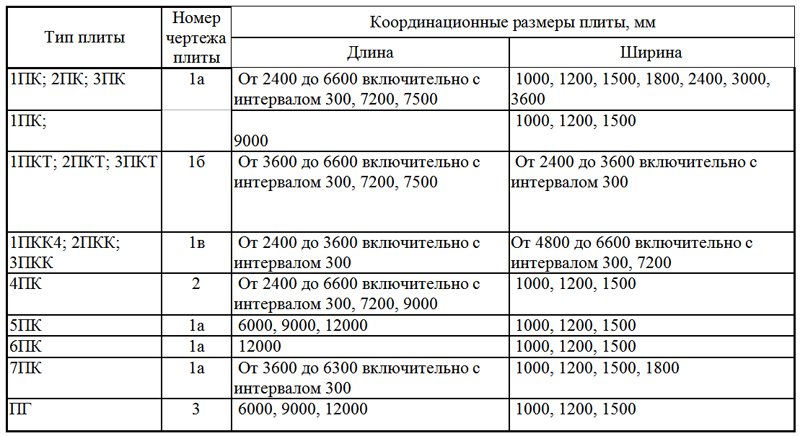
 Comparative table of coordinating dimensions of hollow core slabs
Comparative table of coordinating dimensions of hollow core slabs The length and weight of the panels are of the utmost importance for construction, the length is even less important than the weight.
Weight
As for such an important parameter as weight, everything here is very clear from the first time: the range of products manufactured in Russia ranges from 960 kilograms to 4.82 tons. Weight is the main criterion by which the method by which the panels will be installed is determined.
Typically, cranes are used, as noted above, with a lifting capacity of at least 5 tons (of course, cranes must lift weight with some margin).
The weight of panels of the same marking may differ, but only slightly: after all, if we consider the weight with an accuracy of one gram, anything can affect it.
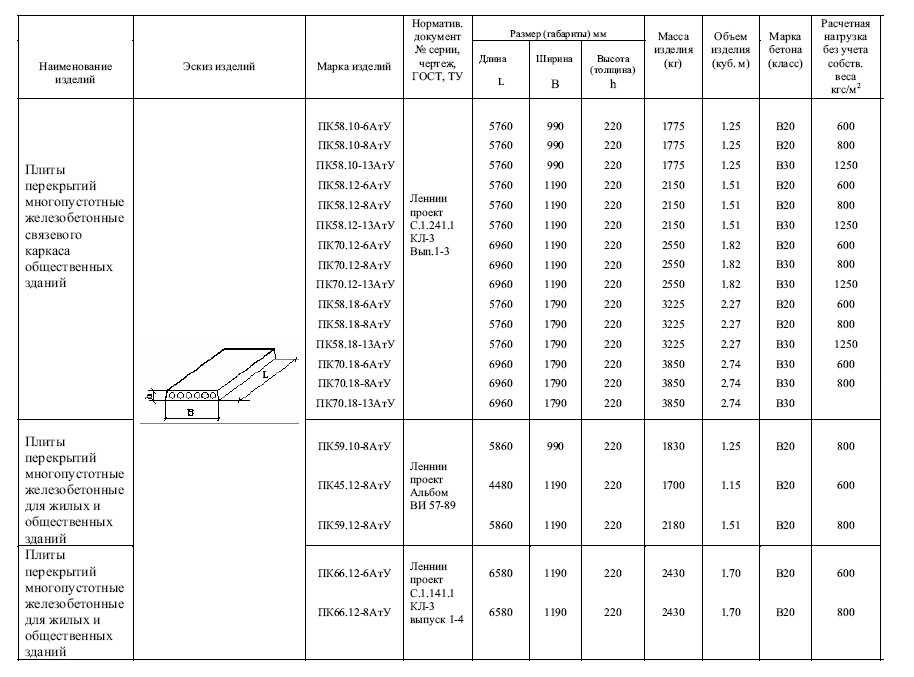
 Comparative characteristics of the main brands of hollow core slabs
Comparative characteristics of the main brands of hollow core slabs If, for example, a product has been exposed to rain, then it will a priori be slightly heavier than the product that has not been exposed to rain.
Types of loads
To begin with, it should be noted that any overlap implies the presence of the following 3 parts:
- The upper part, with the floor where people live. Accordingly, the panel will be loaded by flooring, a variety of insulating elements and, of course, concrete screeds - the main component of the load;
- The lower part, with the presence of a ceiling, its decoration, lighting fixtures. By the way, you should not be skeptical about the presence of lighting devices. Firstly, the same LED lamps require partial destruction of the plate with a perforator for cable laying. Secondly, if we take large rooms, with columns and halls, huge crystal chandeliers can hang there, which will give a greater load than any other fixture or type of decoration. This must also be taken into account;
- Structural. It combines both the upper and lower parts at once, as if supporting them in the air.
A hollow core slab is a structural slab that supports both the top and bottom of the ceiling in the air!
By the way, do not discount the dynamic load. It, as you might guess, is created by the people themselves, as well as the things they move. All this affects the properties and states of the panel.
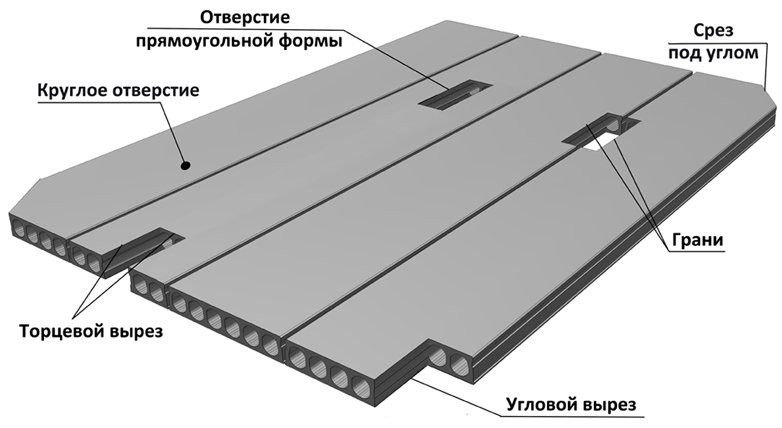
 Diagram of a hollow core slab with holes
Diagram of a hollow core slab with holes For example, if it is normal to transport a heavy piano in a small two-story house from one place to another once, then daily movement will create a much greater negative impact on the multi-hollow slab. It is unlikely to fall, but there may be serious problems with ventilation later.
According to the type of load distribution, they are further divided into 2 groups:
- distributed;
- point.
To understand the difference between these two types, it is worth giving an example. The same huge crystal chandelier that weighs one tone is a point load. But a stretch ceiling with a frame over the entire surface of the plate is already a distributed load.
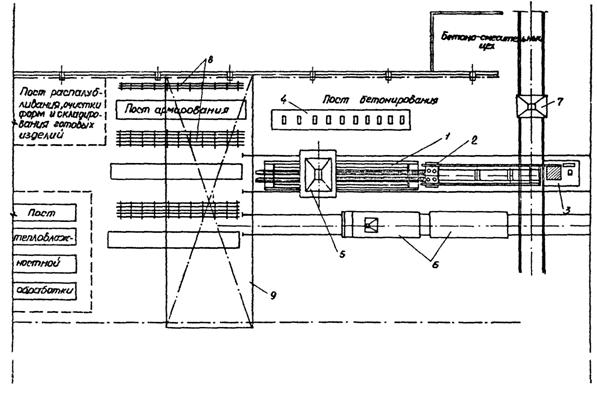
 Installation of a technological line for the production of hollow core slabs
Installation of a technological line for the production of hollow core slabs But there is also a combined load that combines point and distributed. For example, a bath filled to the top. By itself, the bath is on legs, and its pressure on the legs is a kind of distributed load. But the legs standing on the floor are already a point load.
Its cost directly depends on the weight of the hollow slab.
It's tricky, but it can be dealt with. And it is necessary! After all, the calculation for floors and hollow core slabs during construction will still need to be done.
Hollow core grades
As a matter of fact, hollow-core slabs do not even have marks as such. We are talking about marking, which reflects some parameters. It suffices to give a small example.
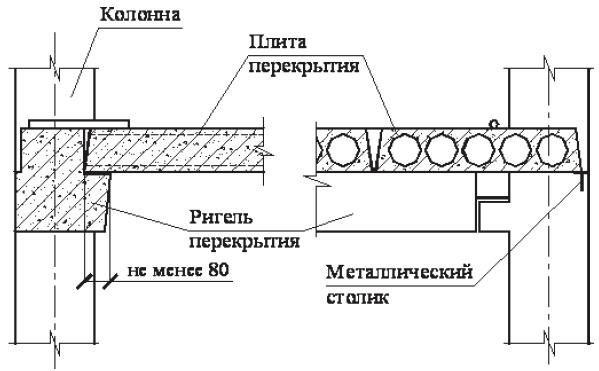
 Scheme of laying a hollow core slab on a crossbar
Scheme of laying a hollow core slab on a crossbar Let's say the panel has the following marking: PK 15-13-10 PK - means a hollow slab; all digital designations indicate any technical parameters.
15 would mean the panel is approximately 15 decimeters (1.5 meters) long. Why about? It's just that the length can be 1.498 meters, and on the marking they have the right to round this figure to 1.5 meters (15 decimeters). The number 12 means that the product has a width of 10 decimeters. The last digit (in this case, 10) is the most important number.
This is the load that the material can withstand (maximum allowable). In our case, the maximum load will be 10 kilograms per 1 dm². Usually builders consider the load per square meter, here it will be 1000 kilograms per 1 m². In general, everything is not so difficult.
The panel brand always looks like PC-XX-XX, if sellers offer other options, then you should be wary.
Load calculation
Limit exposure calculation
The calculation of the limiting impact is a prerequisite for the design of a building. The dimensions and other parameters of the panels are determined by the good old Soviet GOST under the number 9561-91.
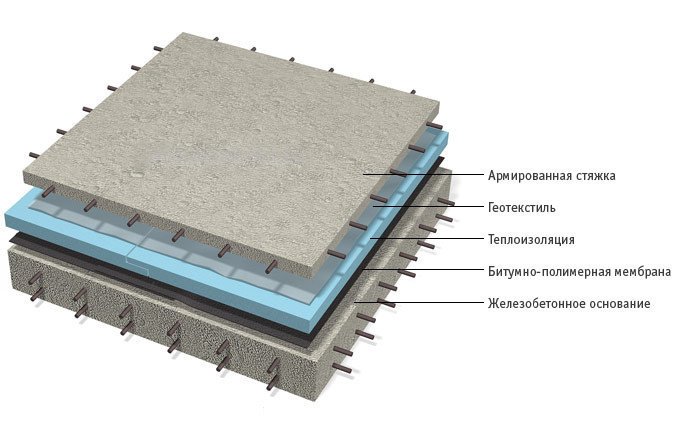
 The device of a hollow slab with a reinforced screed
The device of a hollow slab with a reinforced screed In order to determine the load that will be exerted on the product, it is necessary to indicate on the drawing of the future structure the weight of absolutely all elements that will “press” on the floor. Their total weight will be the maximum load.
First of all, it is necessary to take into account the weight of the following elements:
- cement-sand screeds;
- gypsum concrete partitions;
- mass of flooring or panels;
- thermal insulation materials.
Subsequently, all the indicators obtained are summarized and divided by the number of panels that will be present in the house. From here, you can get the maximum, ultimate load on each specific product.
Calculation of the optimal load
It is clear that the maximum allowable level is a critical indicator, which in no case should be brought up to. Therefore, it is best to calculate exactly the optimal indicator. For example, a panel weighs 3000 kg. It is needed for an area of 10 m².
It is necessary to divide 3000 by 10. As a result, it turns out that the maximum allowable load value will be 300 kilograms per 1 m². This is a small indicator, but you also need to take into account the weight of the product itself, for which the load was also calculated (for example, its value is 800 kilograms per 1 m²). From 800 you need to subtract 300, as a result, you get 500 kilograms per 1 m².
Now you need to roughly estimate how much all the loading elements and objects will weigh. Let this indicator be equal to 200 kilograms per 1 m². From the previous indicator (500kg / m²), you need to subtract the received one (200kg / m²). The result is an indicator of 300 m². But that's not all.
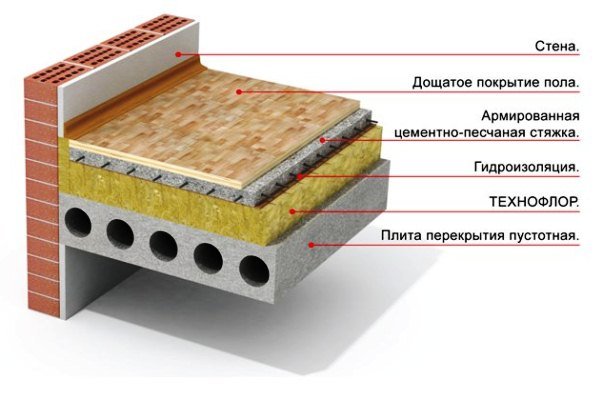
 Diagram of a hollow core slab with waterproofing
Diagram of a hollow core slab with waterproofing Now, from this indicator it is necessary to subtract the weight of furniture, finishing materials, the weight of people who will constantly be in the room or in the house. "Live weight" and all the elements, their load, let it be 150 kg / m². Subtract 150 from 300. As a result of all, the optimally acceptable indicator will be obtained, the designation of which will be 150 kg / m². This will be the optimal load.
Advantages of hollow core slabs
Among the advantages of these products are the following:
- relatively small load on the perimeter of the entire building, in contrast to the same full-bodied products;
- high strength indicators, despite the fact that the bottom panels are hollow;
- reliability;
- the draft at home will be much less intense than when using full-bodied products (in fact, this advantage comes from the relatively low weight);
- relatively low cost.
In general, hollow core panels are one of the most important building materials. Today it is produced by only a few factories throughout vast Russia. The main thing, as noted above, is not to be deceived when buying.
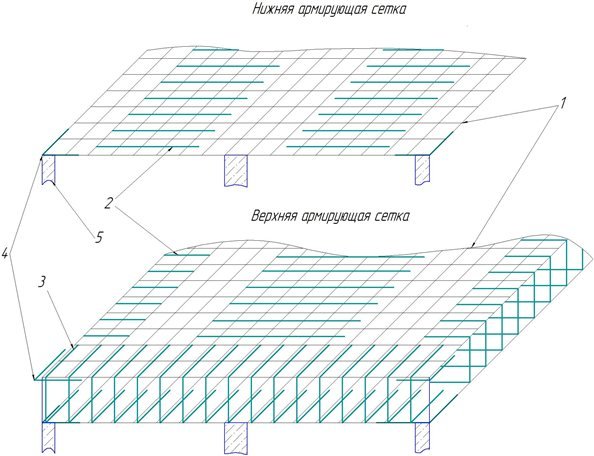
 Scheme of the arrangement of reinforcing blocks in a hollow core slab
Scheme of the arrangement of reinforcing blocks in a hollow core slab Sometimes (this is rare, but still) sellers try to sell low-quality panels, the so-called lightweight ones. For example, they may be marked, which shows that the product is designed for a load of 500 kilograms per square meter, but in reality this parameter is several times lower.
It's not even fraud, it's a criminal offense that should be punished to the fullest extent of the law. After all, if you buy a panel designed for a smaller load, there is a serious risk of collapse of buildings. Such a situation can be observed not only in the provinces, but even in Moscow or St. Petersburg.
In general, when buying such products, you need to be extremely careful. It is important to remember that any design error can even have tragic consequences.
Video
You can watch a video where experts talk in detail about the features of various types of hollow core slabs.
